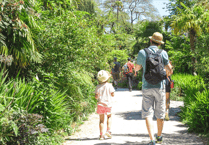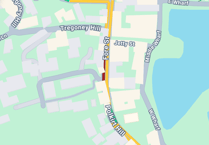A NEW exhibition at Bodmin Keep is set to open on D-Day, focusing on the role of a historic house in the efforts played in World War II.
Carclew: A House at War looks at the important role played by one of Cornwall’s grand country houses, Carclew Mansion, in the Second World War. Swept up in world events, it became a home for refugees, then a communications centre and camp for British and American soldiers.
The story is told through the documents and photographs researched by the team at Carclew and the many artefacts discovered during their painstaking preservation. Opening on Thursday, June 6, the display is a collaboration between the team at Carclew Mansion and Bodmin Keep, Cornwall’s army museum.
Helen Bishop-Stephens, Director of Bodmin Keep, said: “I’m thrilled that through this collaboration we’ve been able to showcase the hidden past of Carclew, and recognise the importance of this historic site.”
The exhibition focuses on Carclew from the early 1930s, and features archaeological discoveries from the Second World War, found in and around the house. A short film by film director Peter Champness, features interviews with the current custodians and is on show as part of the exhibition.
Situated on the estuary of the Fal river, close to the coast, in 1934 a fire destroyed much of the Palladian style, seventeenth-century house. In 1937 it was gifted to the Quakers and two years later became a home for political and religious refugees fleeing persecution from the Nazis. The outbreak of War in 1939 led to the refugee camp's closure. Carclew was requisitioned by the British Army and was used as a camp, firstly for British, then American soldiers, including black soldiers who formed the Quartermaster Railhead Company'.
After the war, Carclew was relinquished by the military and the mansion fell into disrepair. In the 1960s, it was bought by the Neale family, who wanted to preserve the site by preventing further demolition. Over the years, interest and historic research in Carclew has grown, with support from Historic England, Cornwall Heritage Trust, Mylor Local History Group and advice from Heritage Housing Foundation.





Comments
This article has no comments yet. Be the first to leave a comment.